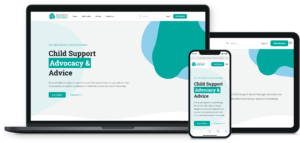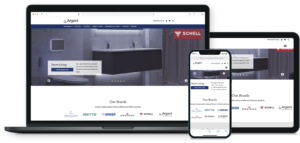How Much Does Website Development Cost In Australia?
The average website design cost can vary anywhere from between $10,000 to $50,000 or more, depending on CMS platforms, number of pages, features of the website and other important factors. As a leading website design company in Australia we would be able to draft average cost for website development.
Introduction
The rise of the internet has drastically changed the way customers research and buy products and services. Back in the day you primarily relied on traditional sources of information such as advertisements in the newspaper and recommendations from friends or family members. The information availability and accessibility was significantly limited compared to today’s standard.
As the majority of customers now turn to the internet for their information, having a website is a must. A well-designed and developed website can provide a multitude of benefits, from establishing credibility and promoting brand identity to gaining a competitive advantage.
But how much does it actually cost to design and develop a website in Australia nowadays? Well…. a simple website with a few pages could cost as little as $ 10,000, while larger intricate websites like ecommerce websites with advanced features and functionality often start at $50,000 and could cost hundreds of thousands of dollars. The cost mainly depends on factors such as the size of the site, the level of customization required, the complexity of the functionality, and the level of support needed.
In this article, we will further elaborate on the process of designing and developing a website and factors that impact the costs.
The Process
The complex design and development of a website can be split up in 4 phases. Each phase will only start once the previous phase has been approved. Throughout each phase there is a close collaboration between the designers, developers and stakeholders to ensure all requirements are met. At Digital8 we use an agile methodology, which enables us to quickly adapt to changing priorities and deliver high-quality projects in a timely and cost-effective manner.
Setting Expectations for Your Project – Discovery and Planning phase
Each project starts with research and scoping of the requirements, this ensures that all the expectations are aligned. During a kick-off meeting we discuss the scope and wireframes for the project before the design and development begin. Once the scope of the project is approved, the project is broken down into sections (known as sprints) to assist the client with budget planning, forecasting and investment. These sprints offer clear deliverables and timelines with reports and outcomes that can be shared with the client at the end of each sprint.
Balancing Aesthetics and Usability – Designing phase
Once the scope is approved, our designers will start the designing phase. The User Interface (UI) and User Experience (UX) design is key to a successful website project. User Interface relates to the visual presentation of components on the page and the interactivity of the project. Whereas the UX is focused on tailoring user journeys that will create the best experience for your target audience.
Not only is there a higher chance of users converting when the website they are browsing has a strong UI and UX, search engines also prefer these websites. They are likely to rank higher on the search engine result pages and will therefore be more accessible to the public. All our designs are responsive, which means that the design will adapt to whichever device you are using, whether that is a desktop, tablet or phone.
Bringing the Design To Life – Development and Testing phase
After the design has been approved, Digital8 web design team in Brisbane will begin bringing the design to life. At Digital8 we assign a project manager to each project to ensure that the project stays on track and provide progress updates throughout the development phase.
Once testing is completed, the website undergoes two types of internal testing, QA (quality assurance) and UAT (user acceptance testing). This ensures that the developers have met all the requirements and everything is working as expected. After the internal testing has been completed, the website is provided to you on a staging link to perform your own testing in order to accept the project as completed.
Launching Your Site – Deployment phase
Once you have conducted UAT and approve the website to go live, we will provision your live server and reconfigure your DNS to point to your new website. This is the end of the project.
Size matters – Breaking down the costs
Now that you have a basic understanding of the process that is involved with designing and developing a website, we’ll further explore the cost involved and what you can expect to pay for different levels of service.
Small Basic Website
A basic website build typically consists of a home, about us, contact us, services and blog page. For a WordPress site build of this size, you’d be looking at around $8000 in Australia. This includes page template designs which have a responsive web design layout. Any additional functionality will increase the costs of the project. Digital8, we specialized as a leading WordPress web design agency in Brisbane and Australia.
Medium-Sized Website
If you have outgrown your small-scale website and are in need of something a bit bigger with extra functionality and security, you might be looking at a medium-sized website. These typically include more pages, additional functionality and complex features. Depending on the level of complexity and the size of your sitemap the costs range from $25,000+.
Large-Scale Website
Large businesses often require a complex website build with a lot of pages, features and functionality. For this website type we recommend building in Drupal. Drupal is the preferred choice for most government agencies as they can handle more advanced requirements and allow you to build a completely custom website to your needs. As a more complex project, the costs range from $50,000 or more.

What Impacts the Website Design and Development Costs
Now you kn0w about the website development cost. We will further elaborate on other factors that you must know
-
Number of pages
Not only do more pages lead to more development and design work, it also leads to a more complex website structure that requires more navigational work. This increases the design and development costs and depending on whether you also need SEO and content done for the additional pages, it might lead to higher total costs.
-
Design
Logically, the complexity of your website impacts the costs of the development. If you want each page to be custom designed, this will require more work and therefore be more costly. Whereas if you are happy to use some custom designed templates to similar pages, for example create one custom template for all your services, then this will significantly lower the costs.
If you have a specific design in mind, be prepared to pay more for a web designer to bring your vision to life.
-
Content
If you have the skills to create your own content, you can save a fair amount of money by doing it yourself. And with skills we don’t mean writing content using an AI as this can actually hurt your SEO in the long run. In the likely case that you do require assistance with content creation, be prepared to pay. Content writers charge anything between $150 to $500 per page, depending on the length and type of content required.
-
SEO
SEO, also known as Search Engine Optimization, is the process of optimising your website’s content with relevant keywords in order to rank higher on search engines. The higher your website ranks, the more people will see your website which will likely result in a higher number of visitors.
At Digital8 each website that we develop comes with a basic SEO set-up to ensure the end product meets our high standards. Our SEO expert offer ongoing monthly SEO strategies which ensures that your content is optimised with relevant keywords, your websites structure and pages are easily crawlable and they build authority by creating backlinks to your content. This will help your website reach higher rankings, drive more traffic and ultimately increase your business’s revenue, however this comes at additional costs.
-
Extra functionality
The required functionality is another major factor which impacts the costs of your website’s design and development. Advanced functionality such as e-commerce of custom integrations will require more time to build and implement and therefore will increase the cost.
Some common examples of additional functionality are client portals, gated content, web accessibility and calculators. Basically, the more complex or advanced, the higher the cost. Therefore it is important to carefully consider which functionality is essential and which functionality could potentially be added to your website at a later stage.
-
Maintenance and hosting
A common overlooked cost is the maintenance and hosting of your website. Every website needs to pay for hosting, this allows the website to be accessible to users on the internet. Hosting will roughly cost you between $100 and $200 a month.
Once your website is launched, you will need to ensure that your website remains functional and up to date. This is where maintenance costs come into play, we recommend setting aside a small part of your budget (roughly 5-10%) for ongoing maintenance.
To sum it up
Designing and building a new website is going to be expensive no matter how you look at it. There are a few ways you can cut the costs, however the final product will always be a reflection of what you are willing to spend. Try to look at the cost of the website design and build as an investment rather than a cost. Investing in a high quality website can help you establish credibility, grow your brand identity, drive more traffic to your website and ultimately increase your business’s revenue.
If you are looking to invest in your website, our developers would love to talk to you! Digital8 is a Leading web design and development firm, providing the full spectrum of digital services – Google Ads in Brisbane, Search engine optimisation, social media marketing, App development and UI/UX design


